St Michael's Catholic Cathedral
Wagga Wagga
S. Lewis; reb. 1939 C.W. Andrewartha, reb. S Laurie 1975 (2m., 22 sp. st., 3c., mech. & el.pn.)
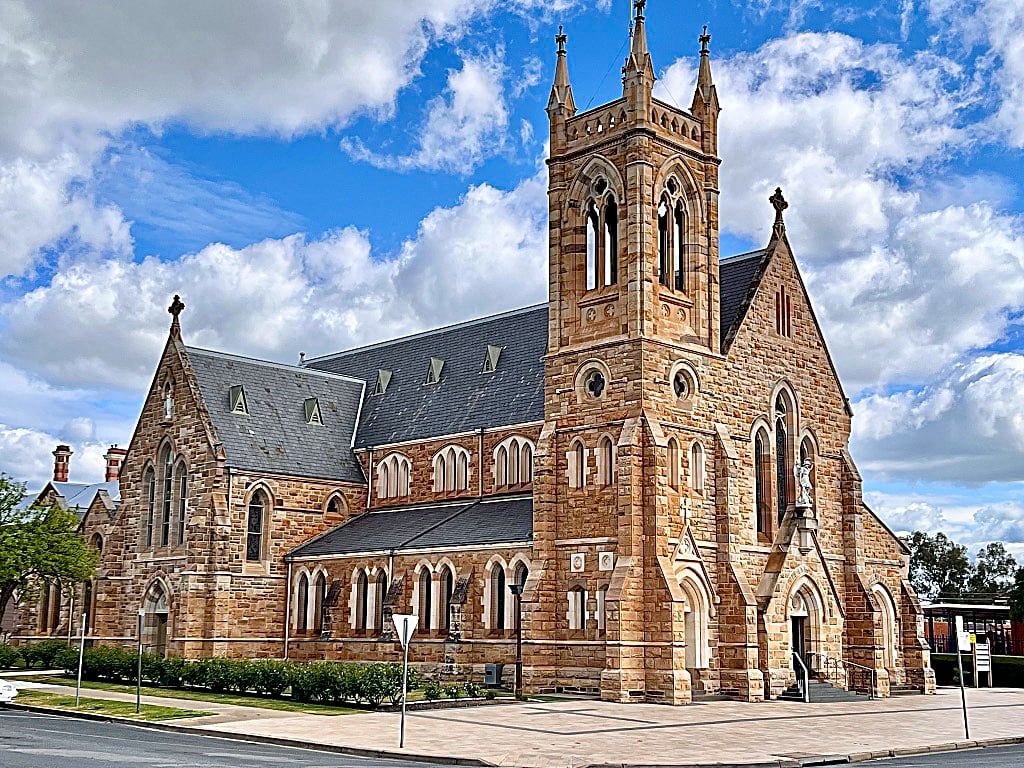
Photograph by Trevor Bunning (October 2023)
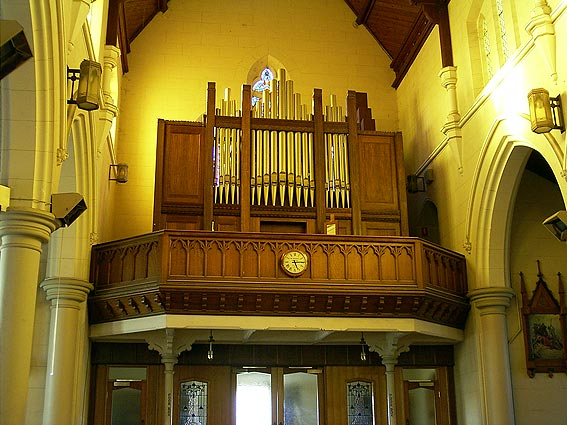
© PdL 2006
From 2003 OHTA Conference booklet:
The foundation stone of the first stage of the building comprising the nave and tower base, was laid on 26 April 1885., the architects were Tappin, Gilbert & Dennehy, of Melbourne, and it was opened in 1887. The second stage followed in 1922-25, to the designs of architect W.J. Monks, at a cost of £34,894. At this time the building became a Cathedral following the establishment of the Diocese of Wagga Wagga in 1917. This is an imposing building constructed from sandstone in the Gothic style, of cruciform plan with clerestoried nave and lofty tower placed to the left of the main façade. The building includes excellent stained glass and a massive tower bell weighing 17cwt cast in the factory of Byrnes, of Dublin. The marble high altar was brought from Carrara, Italy and has subsequently been removed.
George Fincham built a two-manual organ of 10 speaking stops for St Michael's Church in 1887. This was removed in 1892 and installed in the Chapel of St Peter at the Church of England Grammar School, South Yarra, Melbourne. It is now at St Bartholomew's Anglican Church, Burnley, Victoria, where it survives in a substantially intact state and was restored in 2002 by Australian Pipe Organs Pty Ltd.
The present organ, installed on the rear gallery in 1999 by Laurie Pipe Organs, was built by Samuel Lewis, an employee of George Fincham, who was his first apprentice as far back as 1864 and his first foreman, it is thought for the Dorcas Street Presbyterian Church in South Melbourne; it originally had two manuals and 17 speaking stops. It was installed at the Presbyterian Church, Denbigh Road, Armadale, in 1911 and in 1939 the mechanical action was converted to tubular-pneumatic by C.W. Andrewartha, who supplied a detached console. The casework with its carved transom rails, may also date from this time. The instrument was rebuilt in 1975 by Laurie Pipe Organs who converted the manual actions back to mechanical, electrified the pedal and stop actions, provided a new attached drawstop console, and supplied new Mixtures to the Great and Swell, a Trumpet 8ft, and the pedal upperwork.
| GREAT Open Diapason Stopped Diapason Dulciana gvd. bass Principal Open Flute Twelfth Fifteenth Mixture 19.22 Swell to Great SWELL Bourdon Open Diapason Gedeckt Viola da Gamba Gemshorn Piccolo Mixture 22.26.29 Trumpet PEDAL Open Diapason Bourdon Principal Flute Octave Oboe Great to Pedal Swell to Pedal |
8 8 8 4 4 2-2/3 2 II 16 8 8 8 4 2 III 8 16 16 8 8 4 4 |
gvd.bass (lower 12 from Great) |
compass: 56/30
mechanical action to manuals and couplers
electro-pnenmatic stop and pedal action
adjustable pistons
attached drawstop console
* The Argus. 27 April 1885, p.5.
* The Heritage of Australia. South Melbourne: Macmillan 1981, p.2/191
* Sylvia Walsh, Dr Joseph Wilfrid Dwyer, D.D. : First Bishop of the Diocese of Wagga Wagga. Wagga Wagga: The Daily Advertiser, l 978.
* E.N. Matthews, Colonial Organs and Organbuilders. Carlton: Melbourne University Press, 1969, pp.38, 104.
* Graeme D. Rushworth, Historic Organs of New South Wales. Sydney: Hale & Iremonger, 1988, p. 187.
* Organ Music at & Michael 's Cathedral, Wagga Wagga, played by Harold Fabrikant on the Lewis 1877 - Laurie 1975 organ CD recording 1999, DDD FT 012.
* Bob Jefferson, Steve Laurie, Organ Builder: His Life and Works. Somers, Vic.: the Author, 1998, pp. 166-67.
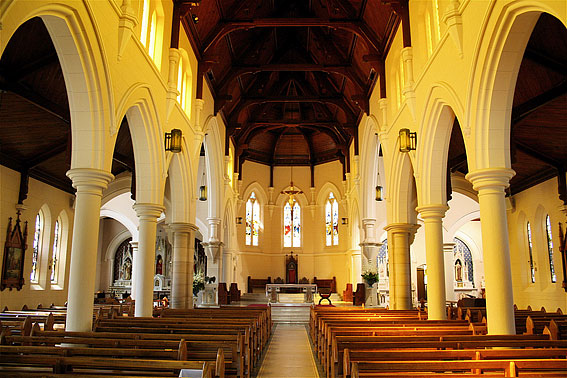
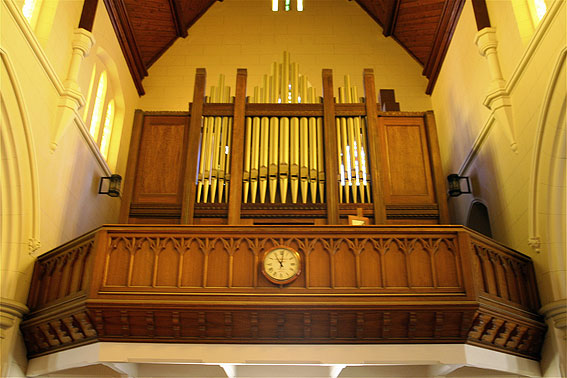
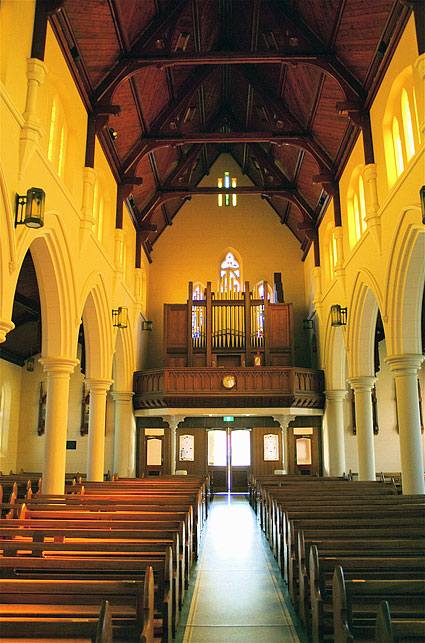
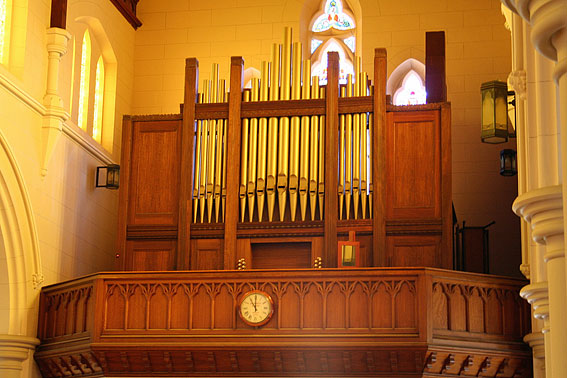
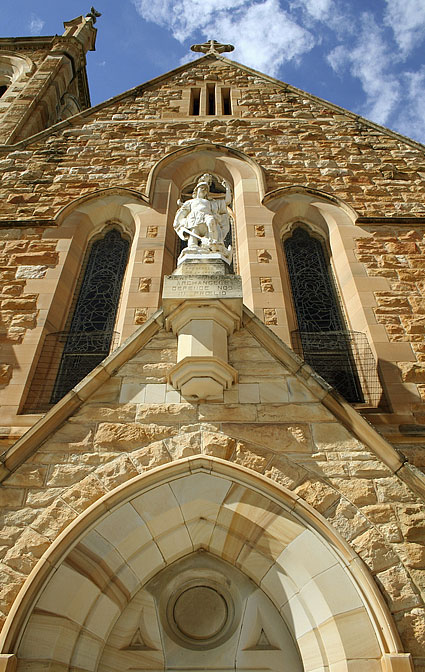
Photos: Trevor Bunning (Oct. 2008)
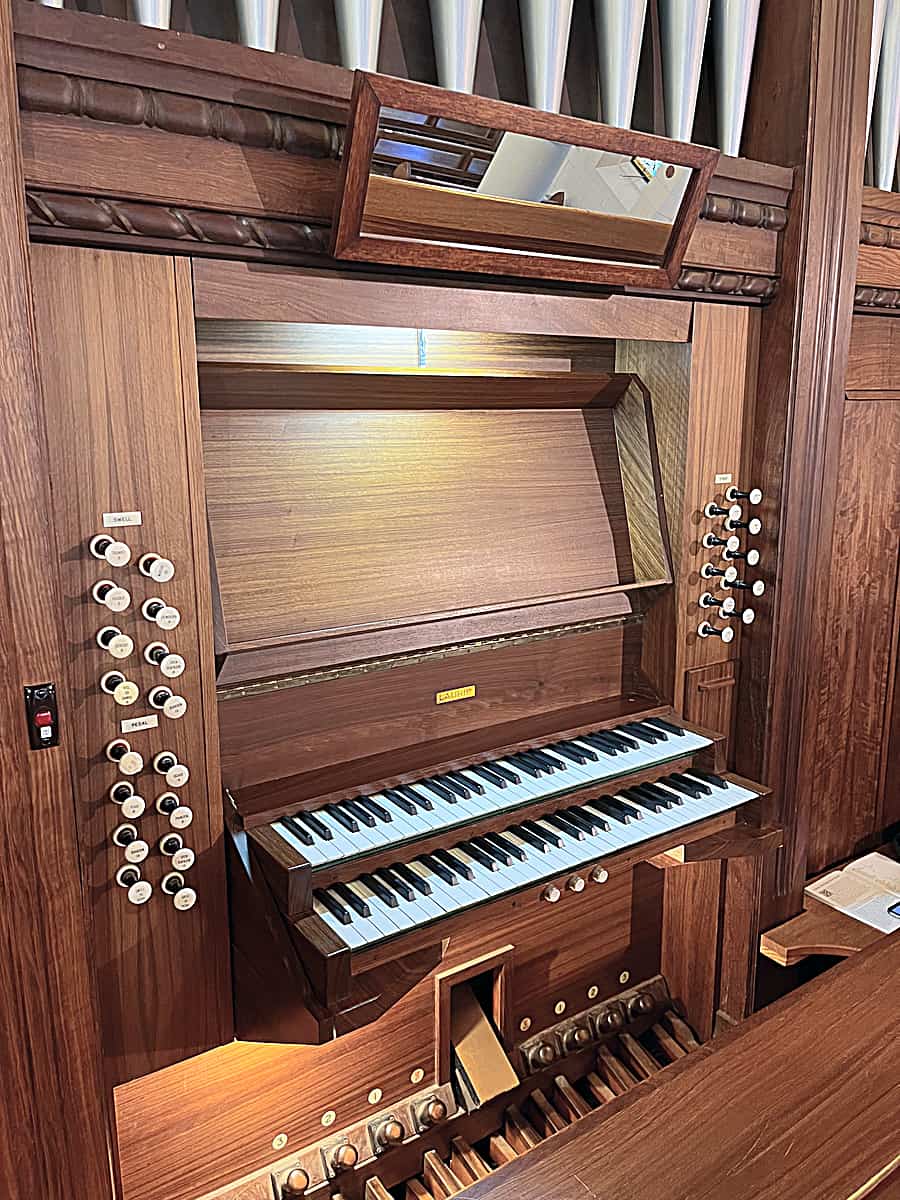

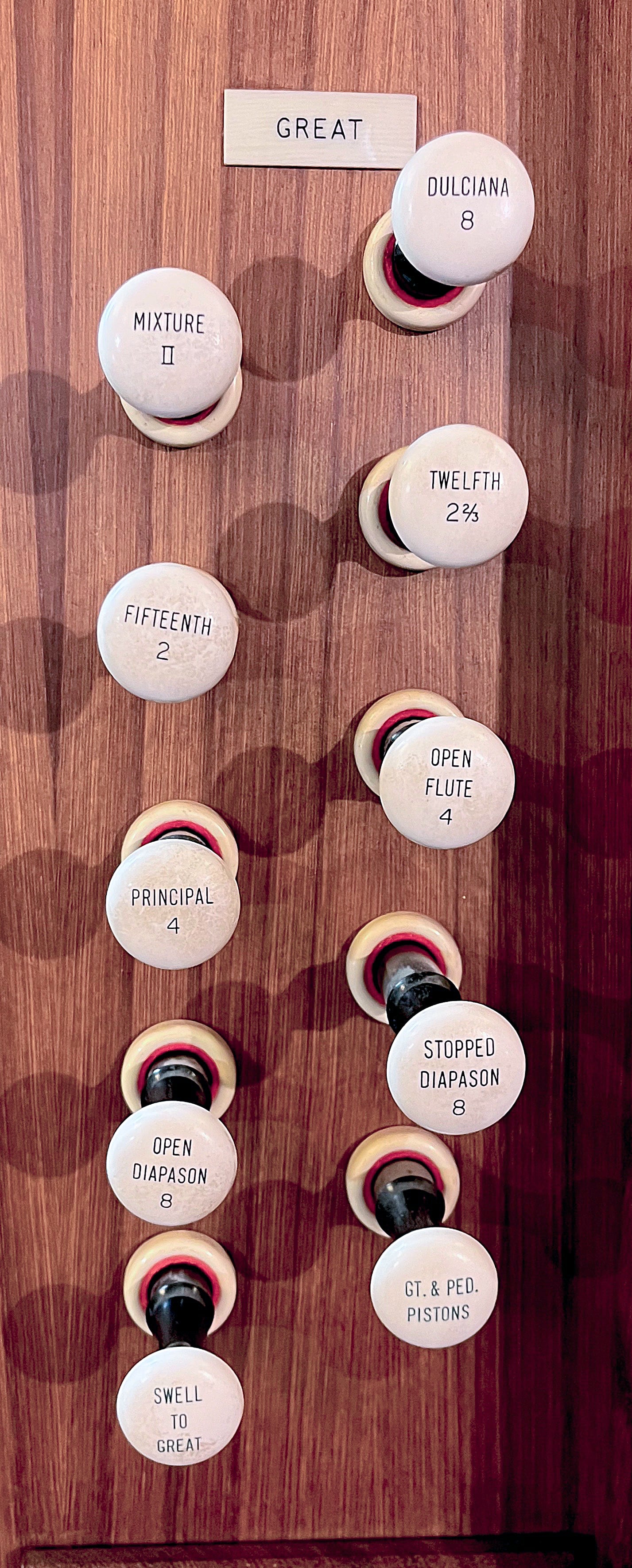
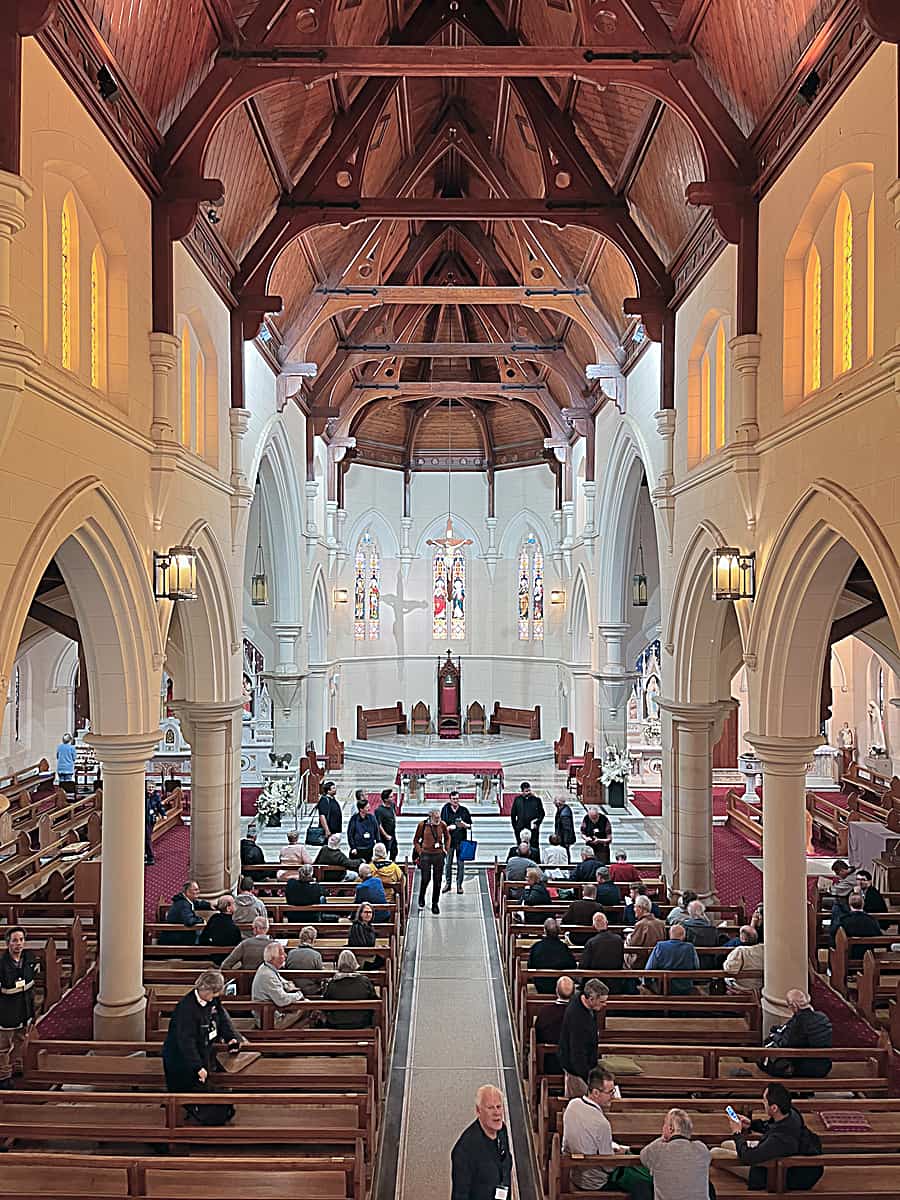
Photographs by Trevor Bunnig (October 2023)